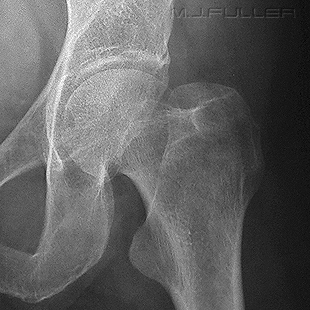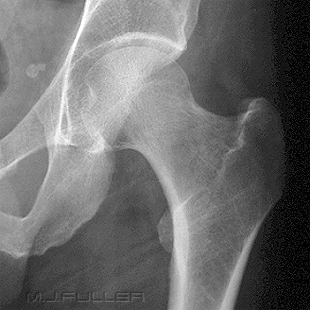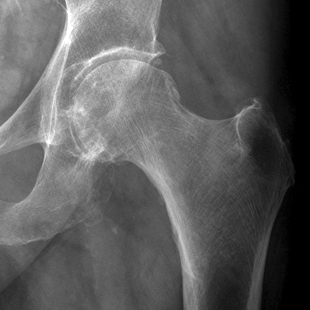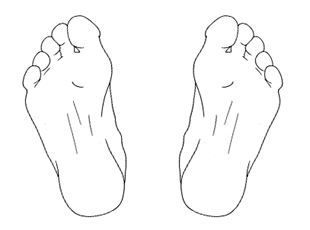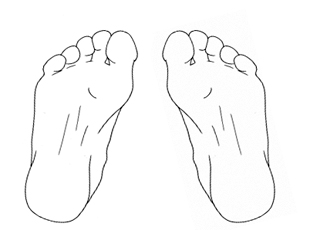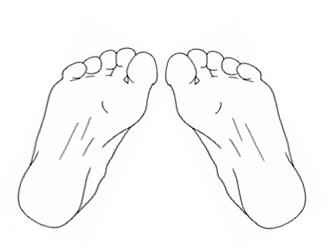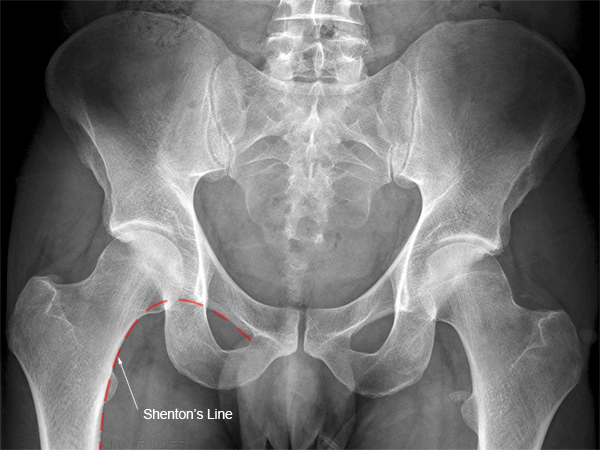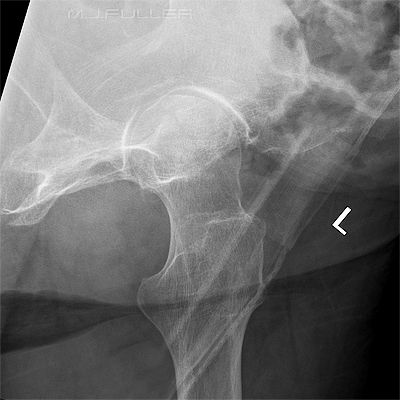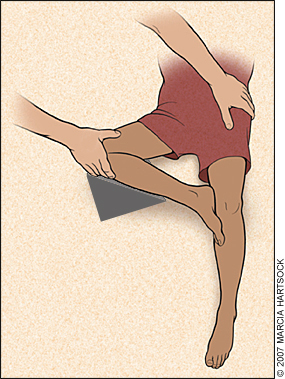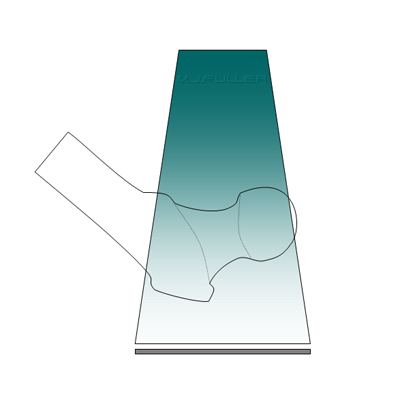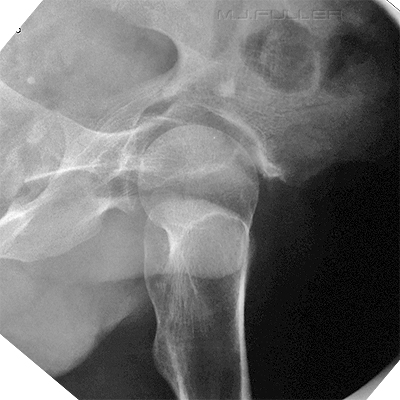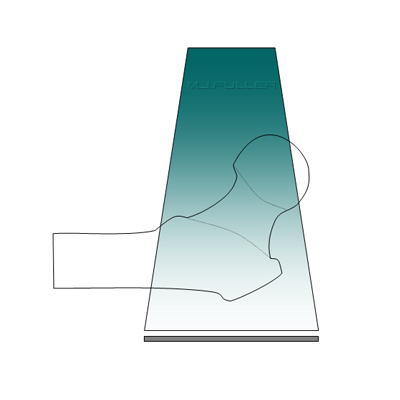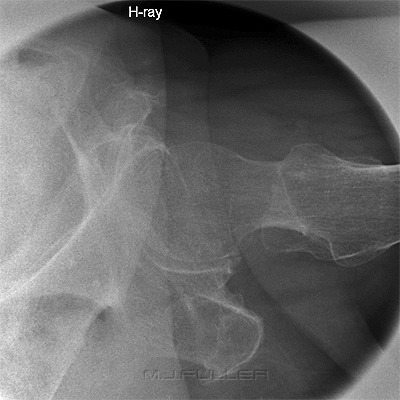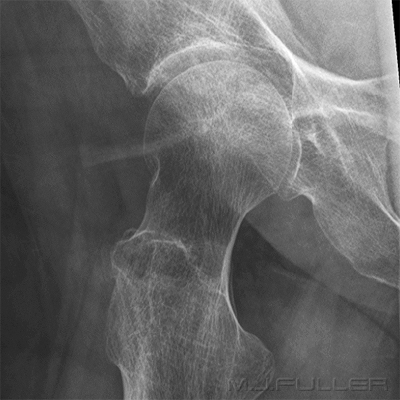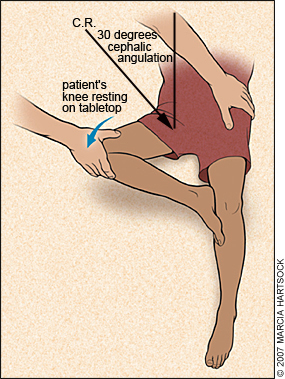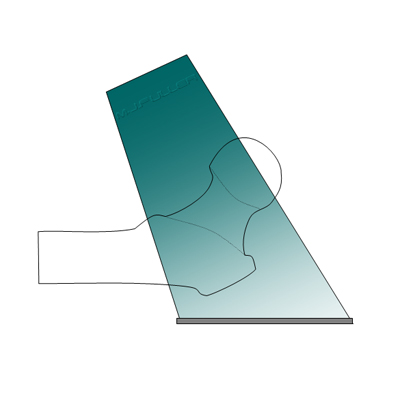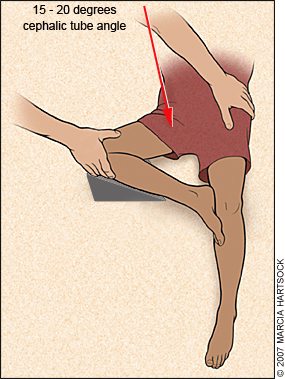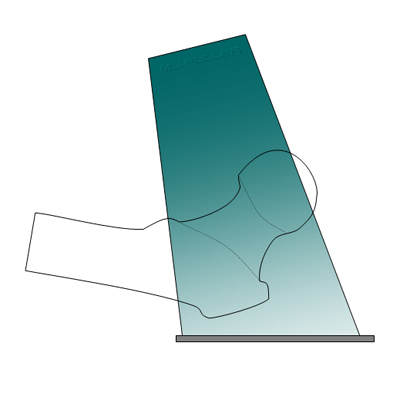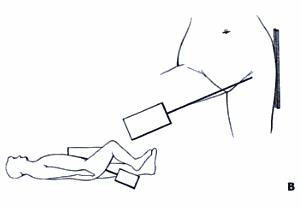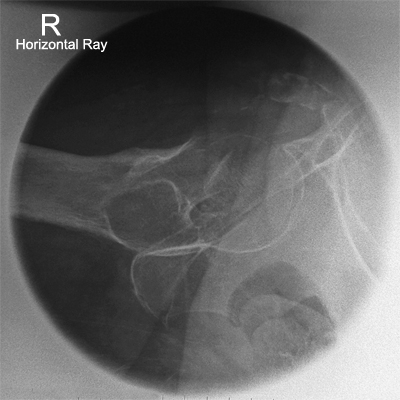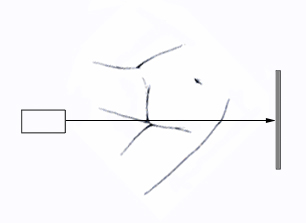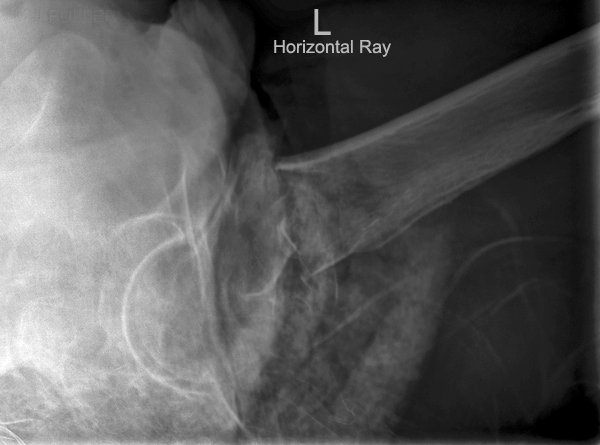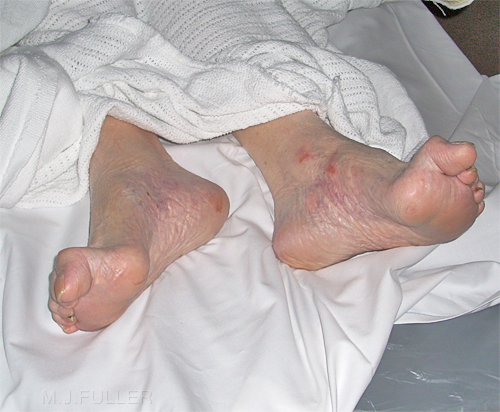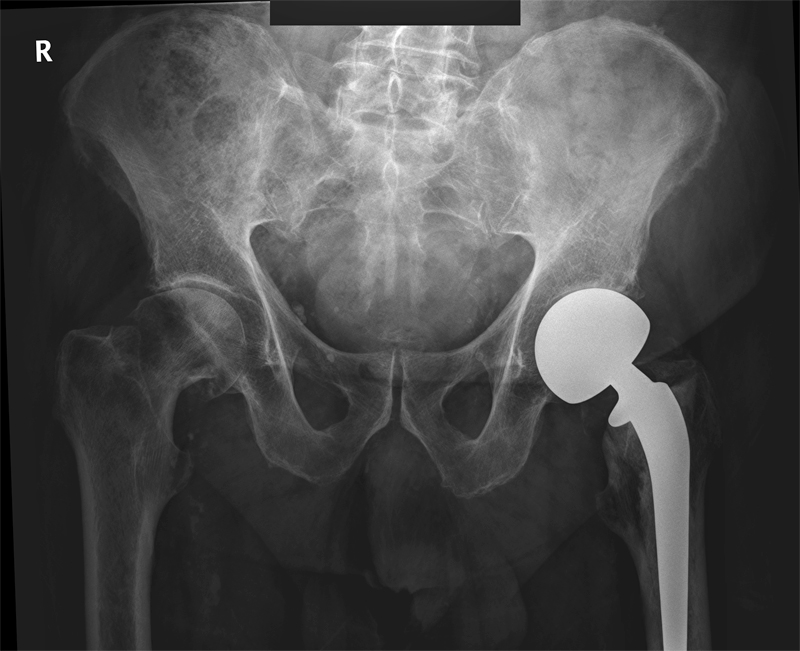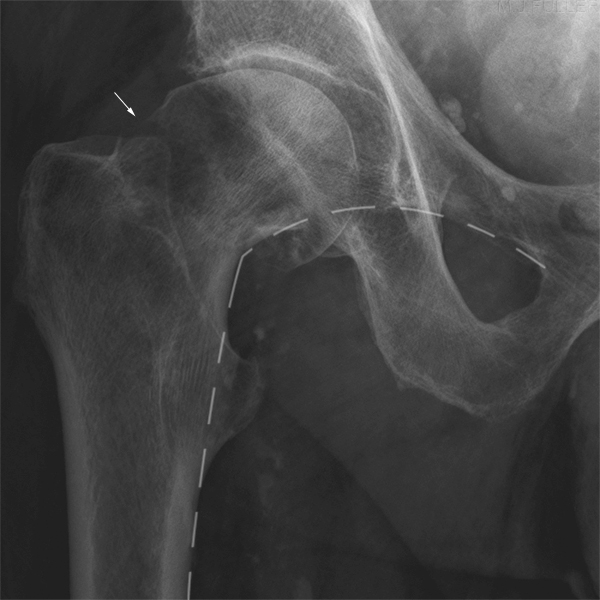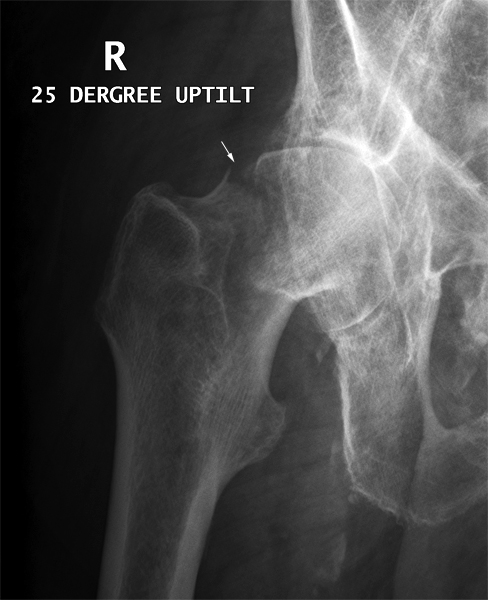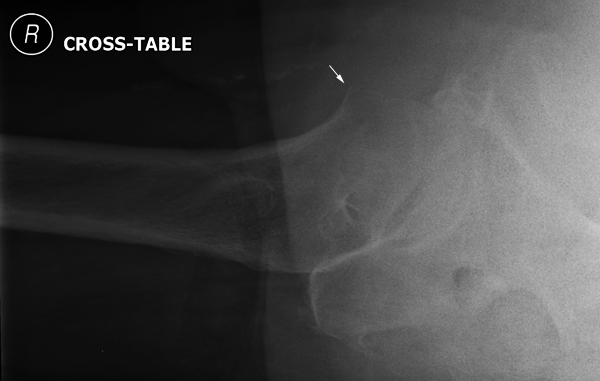Neck of Femur Fractures
Comment.It is commonly necessary for the radiographer to start a trauma hip X-ray examination on the assumption that the patient has a neck of femur fracture or other hip/pelvis fracture. It is therefore not initially appropriate for the radiographer to internally rotate the patient's affected leg for the AP hip/AP pelvis view. If the AP hip/AP pelvis image does not clearly demonstrate a fracture, and there is no evidence of other fracture of the affected leg, it may be appropriate to internally rotate the effected leg with the patient's consent and perform a repeat. Radiographers are sometimes criticised for not internally rotating a ?NOF patent's affected leg, when in fact it was appropriate not to do so for the initial imaging.
Shenton's Line
Modified Rolled Lateral Hip I (Unilateral Cleaves or Frogleg Position)
This technique demonstrates the neck of femur clearly. One of the advantages of this position is that it utilizes the table bucky/IR and benefits from the associated image quality.
Note mattress artifact.This position is similar to that employed with a rolled non-trauma lateral hip. The only difference is that the patient's knee on the affected side is raised off the table and rested on a positioning sponge. The suggested angle between the femur and the tabletop is approximately 30-35 degrees. If you increase this angle (up to 45 degrees), you will achieve even greater clearance of the trochanter off the femoral neck, however, you will also increase the elongation/distortion of the femoral neck
This technique demonstrates the neck of femur clearly. Compare this technique with the conventional rolled lateral hip image (right)
This is a conventional rolled lateral hip image. The greater trochanter almost completely obscures the femoral neck rendering it an unsuitable view for trauma radiography of the hip.
This technique compares favourably with a conventional lateral
horizontal ray trauma hip technique (see image on right)This is a conventional horizontal ray trauma hip image. The demonstration of the femoral neck compares favourably in this image with the "raised knee" lateral (left). Merrill's refers to this as the "Danelius-Miller method".
Modified Rolled Lateral Hip II (Friedman Method)
Modified Lateral Hip Image
This technique is very similar to the previously described modified lateral hip technique. The difference is that the tube is angled instead of the anatomy (the effect is virtually identical).
The patient position is identical to a conventional rolled lateral hip. The only difference is the use of a 30-35 degree cephalic tube angle. Of course, unless you give the full 45 degrees of cephalic angle, there will be some superimposition of the greater trochanter over the neck of femur. Experience suggests that a 45 degree cephalic angle produces too much distortion of the femoral neck.
Modified Rolled Lateral Hip III (Modified Friedman Method)
Raised Knee and Cephalic Tube Angle Lateral Hip Image
This position is a combination of the two previous modified lateral hip techniques. The patient is positioned as shown above with a slightly raised knee (15-20 degrees) and a smaller cephalic tube angle (15-20 degrees).
Horizontal Ray Lateral hip
Technique 1
Technique 2
Clinical Presentation
Case 1
... back to the Wikiradiography home page
... back to the Applied Radiography home page
